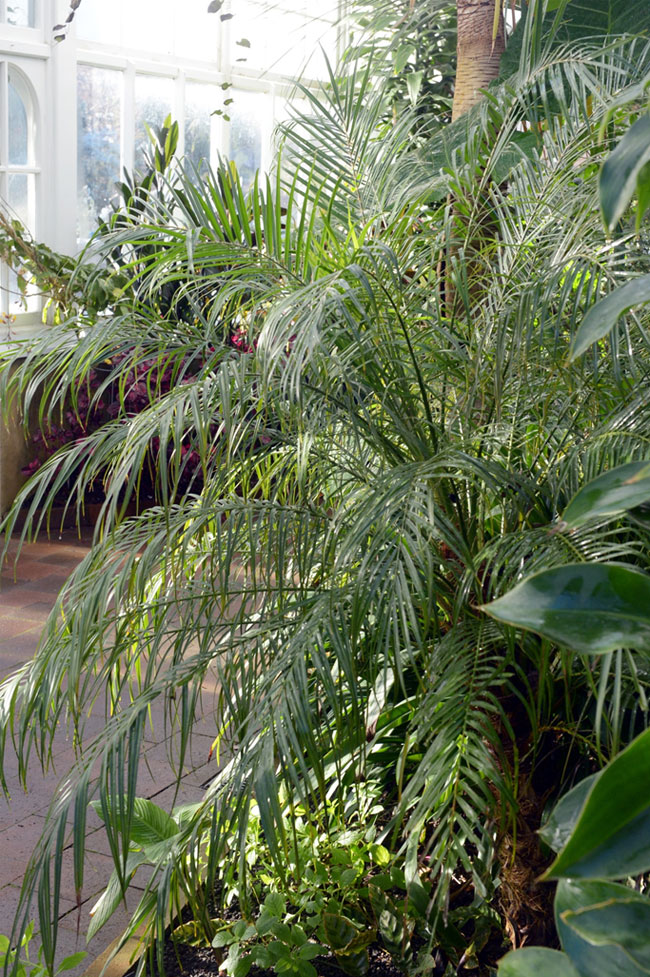Palm Thrives Indoors
This article was first published on 02 Jul 2015.

Phoenix roebelenii
Phoenix roebelenii is a slow growing palm that makes a great ornamental house plant. Because it grows in a pot to about only 1.2 to 1.8 metres, it’s a manageable size for a lot of homes. In warmer, frost-free climates it makes a great landscape specimen, especially for small areas.
Commonly known as pygmy date palm or miniature date palm, it is native to south eastern Asia, from south western China, northern Laos and northern Vietnam.
Phoenix is the genus of palms that produce edible dates but not this species. It is Phoenix dactylifera that produces the date we are familiar with.
Care should be taken when handling this plant or positioning it. Fine feathery leaflets, that make the palm so appealing, change to long sharp spines at the base of the leaf stems. If care isn’t taken they can inflict some serious puncture wounds that can become infected.
Phoenix roebelenii is growing at Dunedin Botanic Garden in the winter garden glasshouse, in the northwest corner of the central bed in the central tropical house.
- Room temperatures around 16 to 24 degrees Celsius are ideal and should remain about 10 degrees Celsius over winter.
- Provide bright light with some dappled shade.
- Water well in spring and summer with time for the soil surface to dry between waterings. Like most house plants, they like a rest period over winter and should be kept fairly dry when not actively growing.
- Pygmy palms enjoy misting if the environment gets too dry.
Stephen Bishop is curator of the winter garden glasshouse at Dunedin Botanic Garden


